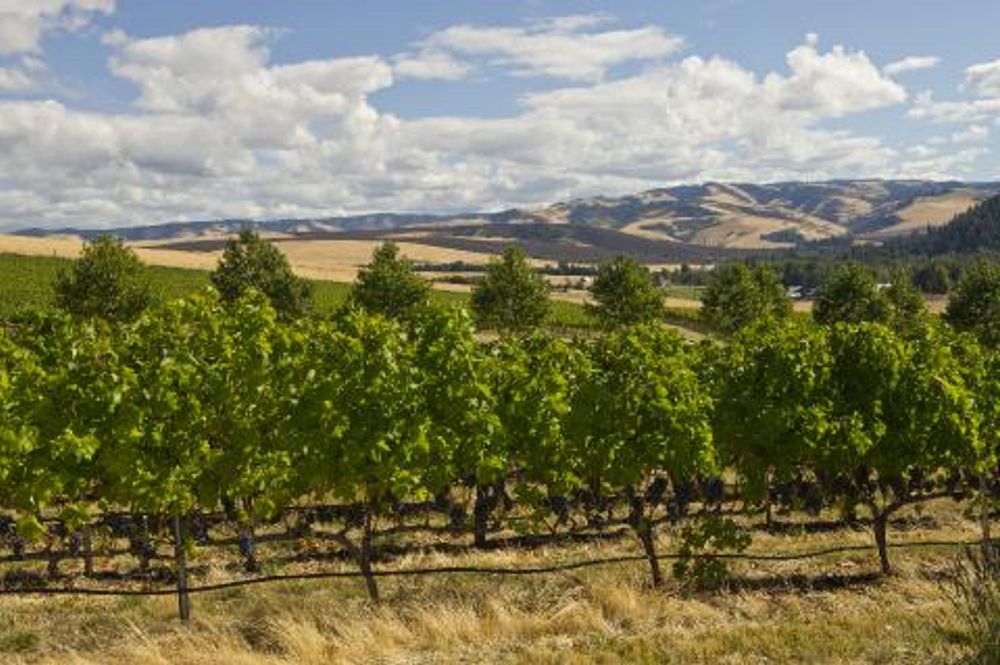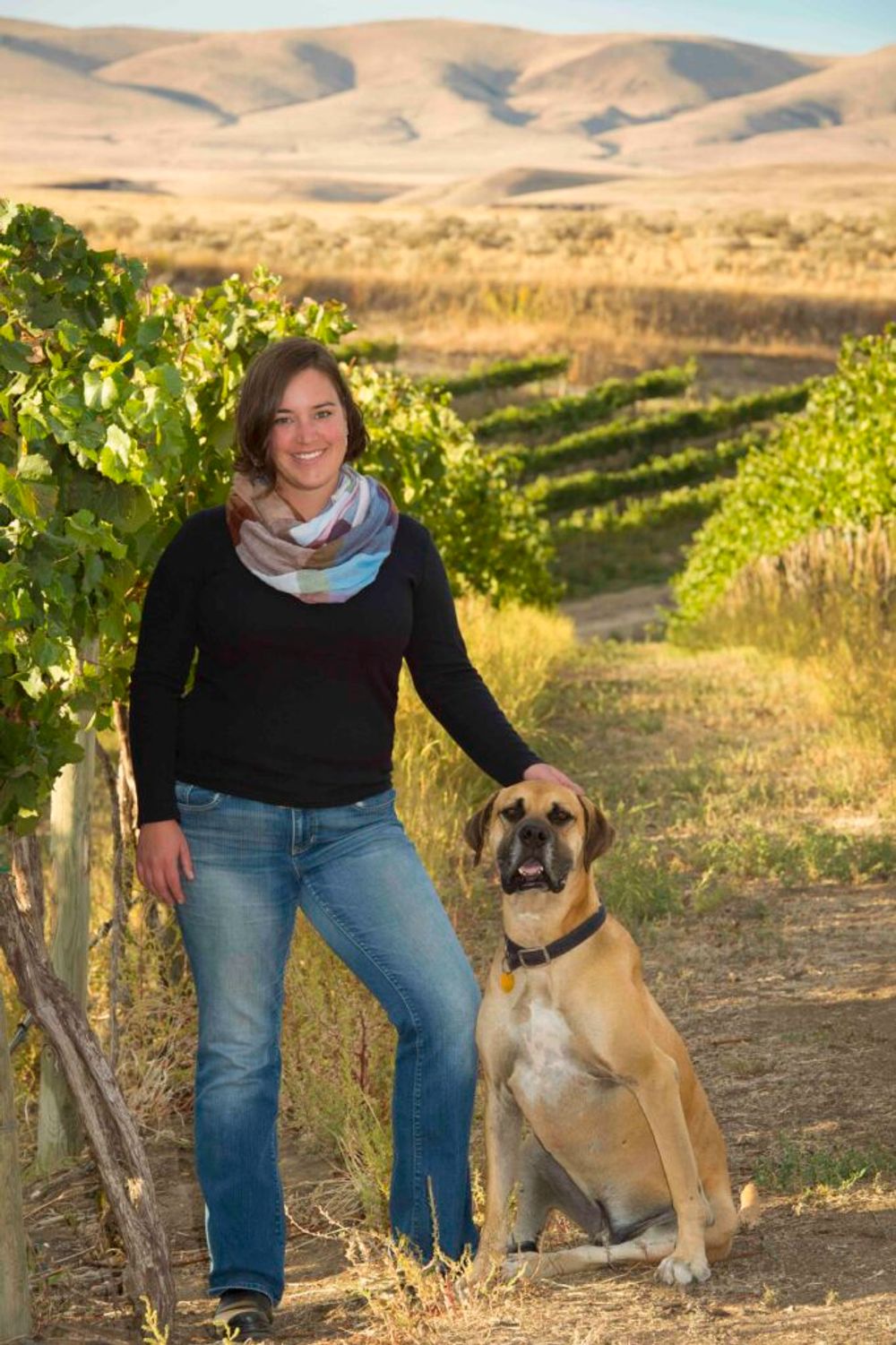Podcasts have proven themselves to be a highly effective way for wine producers and regions they come from tell their stories, as Doug Marshall, senior international marketing manager from Washington State Wine Commission explains. See the bottom of the article for links to the individual podcasts.
Why did you decide to showcase your wines and your producers through this new podcast series?
The situation with the various ‘lockdowns’ obviously meant we had to rethink how we could maintain and develop our relationship with the UK trade during this time. Our challenge was how could we connect in the most effective way and help bring the Washington spirit to life? And how could we explain the true essence of a region located over 7,000 km from the UK?
We decided the best way for our UK audience to get to know Washington State Wine better was to learn from the producers themselves.
The advantage of the podcast series is that we can really go into depth with the producers and get into as much detail as we like. Our podcasts were recorded, edited and broadcasted, and they’re now available on demand whenever people want to listen to them.
How did you decide on the themes of the different podcasts and what did you hope they would all collectively achieve?

Lawrence Francis who runs the Interpreting Wine podcast helped pull the Washington State podcast series together
We worked in collaboration with Lawrence Francis of Interpreting Wine to choose the themes and how we could maximise the impact of the series. His advice was to choose a diverse and engaging set of speakers to lead the virtual journey of Washington State.
We chose to split the three episodes between benchmark producers in the Columbia Valley, Yakima Valley and Walla Walla regions. This allows the listener to access the series at any point, and from there, explore the other episodes.
The three episodes are undoubtedly the most comprehensive podcast coverage of the region and will continue to tell the story of Washington wine for years to come. We expect the series to be essential listening for wine writers, importers, sommeliers working with Washington State wines as well as WSET Diploma and Master of Wine students.
How did you pull the podcasts together and present the information?

The podcasts were a new way for Washington State producers like Chateau Ste Michelle to tell its story
The format for each podcast starts with Lawrence introducing the episode and hosting a conversation with each guest, who then acts as our guide to the specific region in which they are making wine. They are together able to give a helicopter view of the region, covering both its physical and cultural landscapes, before going in depth into their vineyard sites and the wines they make.
The wines of Chateau Ste Michelle and Reynvaan Family Vineyards, featured in the podcasts, are available in the UK, so listeners have the option of tasting along with the show. The benefit of recording the episodes in the same order they are released is that later in the series Lawrence makes connections between earlier episodes, thus reinforcing that this is a coherent series
What were the key things you learnt about putting together a successful podcast?
We think you need a few key elements to produce a truly successful podcast. The main factor is undoubtedly the story that is being told and how the presenter tells it. Our podcasts are intimate and engaging, so listeners can really get to know the winemakers and their message. We think that’s what makes it unique.
Our three winemakers have very different stories to share. Our aim was to demonstrate how diverse the region, the wines, and winemakers of Washington State are. Each story is different and helps engage with the audience.
They are 90 minutes each – how did you decide on the length of time and did you feel that was about right?

The podcasts were a new engaging way to bring the unique stories of areas such as Columbia River in Columbia Valley to life
Again, Lawrence guided us regarding optimal length. His recommendation was to allow 90 minutes for each recording, which would translate into an episode of about an hour. He suggested recording a longer opening episode as this covered the Columbia Valley (the largest viticultural area in Washington State), which we did with Juan Muñoz Oca of Chateau Ste Michelle (the largest producer in the state).
This episode also covers the Missoula Floods in some depth. Understanding the Missoula Floods is vital in order to appreciate the diverse geology of Eastern Washington and we didn’t want to rush this.
The episodes on Yakima Valley and Walla Walla are around 70 minutes long. As we did such a good job with choosing the speakers, we feel that all three episodes are engaging, must-listen content throughout.
How did you promote them and what sort of audience did you have?
Lawrence published dedicated Instagram posts for each episode and emailed his database, which includes 500 WSET Diploma students.
Up to March 5 (less than one month since release) the series has been played more than 2,250 times. Total series listening currently stands at 1,488 hours, or 62 days. This will continue to rise over time and is expected to climb in future WSET Diploma exam cycles. The audience is also quite well spread with 35% of listens coming from the US and 26% in the UK. Interpreting Wine’s audience is 70% trade.

The podcast series was able to shine the spotlight on regions such as Walla Walla
Would you look to repeat using podcasts in the future and would you do anything different?
Podcasts are currently being recorded with Washington State Wine in the US. For our UK market, this is definitely something we are looking to pursue. In terms of anything different, we’re keen to perhaps work with some key UK trade members that are working with Washington State wine, as well with winemakers, to develop conversations on relevant topics to the market.
What other steps have you taken during Covid-19 to engage and communicate with your customers and consumers?
To maintain our relationships with our target audience, we developed various activities to be able to continue to engage with them, such as an online training with winemakers and 40 sommeliers from around the UK. We are also currently working with dedicated retail partners to help Washington State wine stand out in their offer and encourage their consumers to taste and try Washington State Wine.
In fact, hosting virtual events, enabled us to create an event aimed at top level media via a global panel on Syrah including Washington, France, and Lebanon.
We are of course very much looking forward to meeting in person again with the UK, and we are currently organising our annual tasting which we hope to take place on June 14 2021.

Washington’s Red Mountain AVA again has its own story to tell
Which of the new steps have you taken do you think will be here for the long term?
We already did a lot of work on the digital side of things, but I think the challenges of 2020 have certainly demonstrated the number of advantages online activities can offer. We’ve discovered new and dynamic ways to connect with our audience online, which we believe are here to stay.
How have sales been affected during COVID-19?
Exports of Washington wines have remained strong this past year, growing by double digits, despite the challenges of 2020. The average case price dipped slightly as people stocked up in the spring last year, but overall premiumisation does still seem to be the trend for Washington wines.
What are your hopes for the rest of 2021 and going into 2022?
We still have high hopes for 2021. As vaccination plans get rolled out worldwide, we can see a light at the end of the tunnel and are so excited to burst through the gates and see our friends and customers around the world. Prior to the pandemic, Washington was growing at a rapid rate and we have every expectation that trend will continue as we get back to normal.
Washington State Wine Commission’s Podcast Series
Podcast 1 Juan Munoz-Oca, Ste. Michelle Wine Estates

Juan Munoz-Oca is able to talk through the unique climate and terroir of the Columbia Valley in his podcast
An overview of Columbia Valley, Missoula Floods and geological formation. Climate overview. Wine Tasting.
Wines covered:
2019 Ch St Michelle Riesling Columbia Valley
2018 Ch St Michelle Chardonnay Columbia Valley
2017 The Pundit Syrah Columbia Valley
2016 Col Solare Cabernet Sauvignon
You can listen to the episode here: http://www.interpretingwine.com/columbiavalley
Podcast 2: Kerry Shiels, Côte Bonneville

Kerry Shiels, at the Dubral Vineyard which is part of Côte Bonneville
An analysis of the Yakima Valley and a wine tasting.
Wines covered:
2019 Cote Bonville Riesling
2013 Yakima Valley syrah
2012 Yakima Valley Red
You can listen to the episode here.
Podcast 3: Matt Reynvaan, Reynvaan Family Vineyards

Matt Reynvaan’s wines are already well established and popular in the UK.
Covering the Walla Walla Valley and all the terroir differences in the region.
Wines covered:
2017 In the Rocks
2017 In the Hills
2017 The Contender
You can listen to the episode here.

- To find out more about Washington State wine then go to the commission’s website here.
- And on Twitter you can follow @Wa_State_Wine.









































